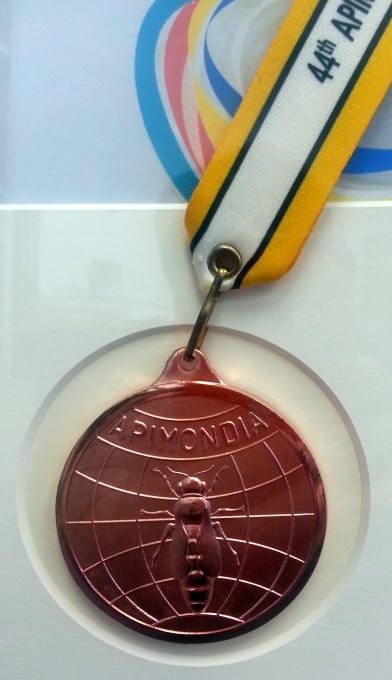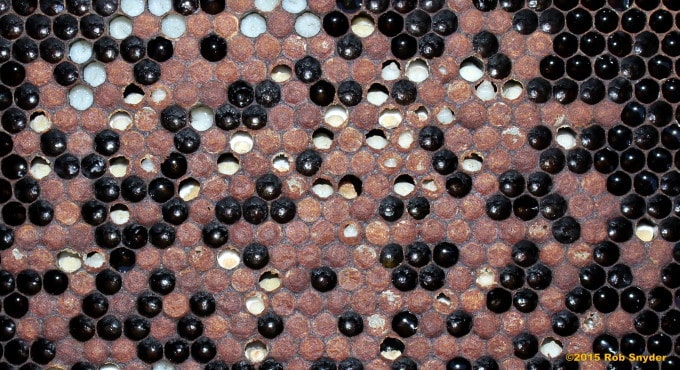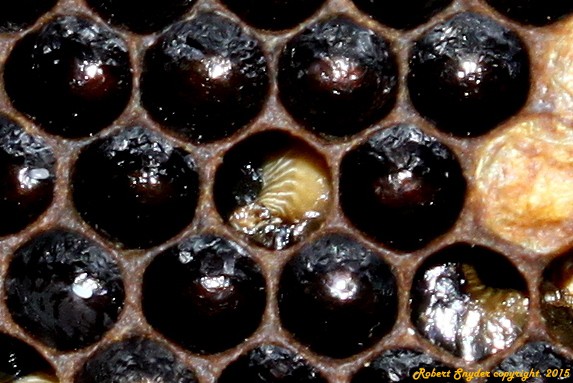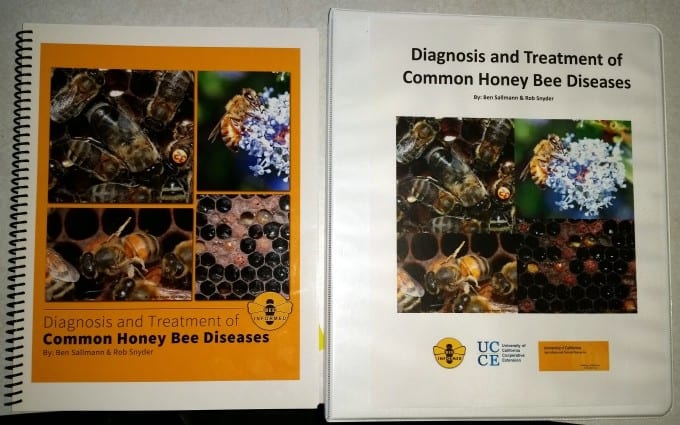
At Apimondia this year our training manual for ‘Common honey bee diseases’ was submitted in the book category. This simple training manual was entered among many other highly competitive books and won a bronze award to our surprise! I originally wanted to create a honey bee disease/diagnosis manual because most of the literature had very small, poor quality photos which made disease identification difficult. So for the past 7 years I had been collecting images of the various bee diseases and pests I came across during colony inspections in Pennsylvania as well as in migratory operations around the country. In 2011, I moved to Northern California with Mike Andree to join Katie Lee as part of the Northern California Tech-Transfer Team. After a few years of working, I realized I had enough images to put together a manual and for the first time I felt like there was a purpose for it. By working with many commercial beekeepers and talking to them about what they were seeing in colonies, I kept hearing terms like ‘Snotty Brood’, ‘Crud’, ‘Virus’, or ‘Corn-color Brood’ and this made me concerned that some of these disease symptoms were going un-noticed and un-treated.


At this point in time it was 2013 and I was working alone in the summer and was able to focus on the start of the manual. I started off a blog series on honey bee diseases and pests. During this time I had the blogs edited by Karen Rennich and Bethany Vowinkle. Around this time Ben Sallmann started working with me on the Tech Team and he also helped in editing the manual. Once I had produced all of the blogs, I started printing/laminating them and placing them into 3 ring binders. I had by then developed another idea for the book. Since many of the migratory beekeepers had Spanish speaking beekeepers and beekeeping foremen, I felt that translating the book into Spanish would help those employees better recognize diseases as well as help them inform the beekeeper of any suspicious brood symptoms in the field. It was not until we had produced a printed version that the Spanish translation was included. Dewey Caron did most of the translation and this was later edited by Juliana Rangel-Posada now at Texas A&M.

At the 2014 California Queen Breeders meeting Ben and I decided that along with the summary reports. we would also hand out the 3 ring binder manual prototypes. At this meeting Dennis VanEnglesdorp and Karen Rennich saw the manual for the first time. They instantly liked the idea and quality of the book and thought this would be a great training manual. At this point I felt like the manual was unfinished, but thought it would be a good first version and I could always follow up with a more in-depth manual including more images and information on pests and ways to deal with them.

The manual turned out great and I was really surprised that it won an award, It was never really intended to be a book but a tool to assist new employees of the commercial industry in disease diagnosis and identification. I would like to thank Mike Andree in assisting in many of the photos as well as finding sick colonies to photograph. I would also like to thank Nathan Rice in assisting in finding sick colonies to photograph back in 2009-2010. The book is now being used to train many apiary inspectors, bee clubs, beekeepers, etc. with the identification of these common brood diseases. I hope this helps the industry decrease the amount foulbrood as well as become more observant beekeepers. If you have any ideas for improvements or additions, we’d love to hear from you.
